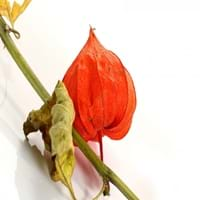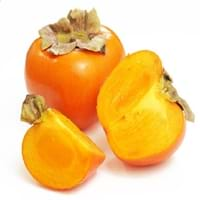Health Benefits
Anti-oxidant properties, Anti-inflammatory properties, Cancer prevention, Maintains healthy cholesterol level, Reduces blood circulation problems, Treatment of cough, fever & sore throat, Treatment of Hypertension
Anti-oxidant properties, Beneficial in curing fever, Cancer prevention, Heart care, Reduces nervous tension
General Benefits
Treatment of asthma, Treatment of cataract, Treatment of hepatitis, Treatment of macular degeneration, Treatment of neurodegenerative diseases
Anti-inflammatory properties, Boosts immune system, Controls blood pressure, Digestive aid, Eye care, Fights against infections, Helps in weight loss, Improves blood circulation
Skin Benefits
Treatment of Rheumatism & Dermatitis, Treatment of Skin Inflammation
Anti-aging benefits, Brightens and lightens complexion, Reduces wrinkles
Hair Benefits
Unknown
Good conditioner, Promotes longer and healthier hair, Treatment of dandruff
Allergy Symptoms
NA
Abdominal pains, Anaphylaxis, Inflammation
Side Effects
Hypertension, Ventricular Tachycardia
Affects blood glucose levels, Decrease in blood sugar levels, Coagulation
Best Time to Eat
As a snack in the late afternoon, Eat the fresh ones, avoid mixing with any other foods, don't eat after meal., Morning time (before lunch), Strictly avoid empty stomach
Along with meal, As a snack in the late afternoon, Don't consume at night and before bed, Eat the fresh ones, avoid mixing with any other foods, don't eat after meal.
Vitamin A (Retinol)
Not Available
Vitamin B1 (Thiamin)
Not Available
Vitamin B2 (Riboflavin)
Not Available
Vitamin B3 (Niacin)
Not Available
Vitamin C (Ascorbic Acid)
Vitamin E (Tocopherole)
Not Available
Water Content
Not Available
Calories in Fresh Fruit with Peel
Calories in Fresh Fruit without Peel
Not Available
Not Available
Calories in Frozen Form
Not Available
Not Available
Calories in Dried Form
Not Available
Calories in Canned Form
Not Available
Not Available
Type
Fruit vegetable
Berry, Tree fruit
Season
Spring, Summer
Autumn, Winter
Varieties
Physalis franchetii, Physalis pruinosa, Physalis peruviana, Physalis heterophylla and Physalis philadelphica
Early Golden, John Rick, Miller, Woolbright and Ennis
Color
Bright Yellow, Orange
Orange, Red, Yellow
Inside Color
Orange
Yellow
Origin
Chile, Peru
Eastern United States
Soil Type
NA
Sandy loam, Well-drained
Climatic Conditions
NA
Can tolerate wide range of climates, Sunny
Facts about
NA
- It is said that formation of seeds inside the persimmon fruit shows what type of winter is coming(type of snow).
- There are about 2000 varieties of this fruit.
- The American persimmon has another name 'Possumwood'.
Other Countries
NA
Azerbaijan, Brazil, Costa Rica, Japan, Korea, Pakistan
Top Importer
Netherlands
United States of America
Top Exporter
Colombia
United States of America
Botanical Name
Physalis Peruviana
Diospyros virginiana
Synonym
Alkekengi, Herschellia & Pentaphitrum
Not Available
Subkingdom
Tracheobionta
Tracheobionta
Division
Magnoliophyta
Magnoliophyta
Class
Magnoliopsida
Magnoliopsida
Subclass
Asteridae
Dillenhidae
Family
Solanaceae
Ebenaceae
Species
Physalis
D. virginiana
Generic Group
Not Available
Not Available
Difference Between Physalis and American Persimmon
We might think that Physalis and American Persimmon are similar with respect to nutritional value and health benefits. But the nutrient content of both fruits is different. Physalis and American Persimmon Facts such as their taste, shape, color, and size are also distinct. The difference between Physalis and American Persimmon is explained here.
The amount of calories in 100 gm of fresh Physalis and American Persimmon with peel is 77.00 kcal and 127.00 kcal and the amount of calories without peel is Not Available and Not Available respectively. Thus, Physalis and American Persimmon belong to High Calorie Fruits and High Calorie Fruits category.These fruits might or might not differ with respect to their scientific classification. The order of Physalis and American Persimmon is Solanales and Ericales respectively. Physalis belongs to Solanaceae family and American Persimmon belongs to Ebenaceae family. Physalis belongs to Physalis genus of Physalis species and American Persimmon belongs to Diospyros genus of D. virginiana species. Beings plants, both fruits belong to Plantae Kingdom.









